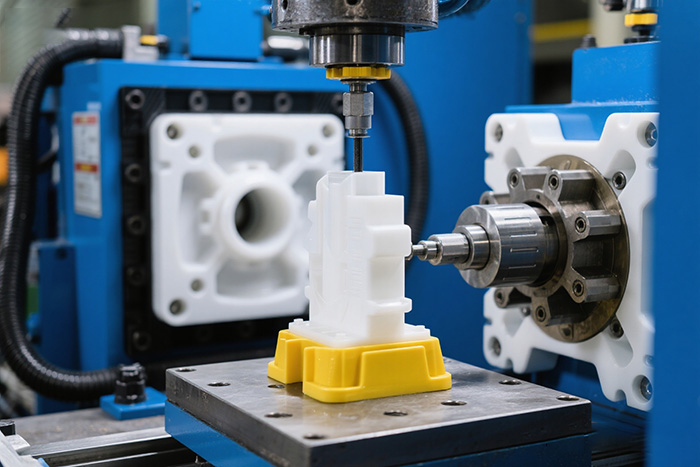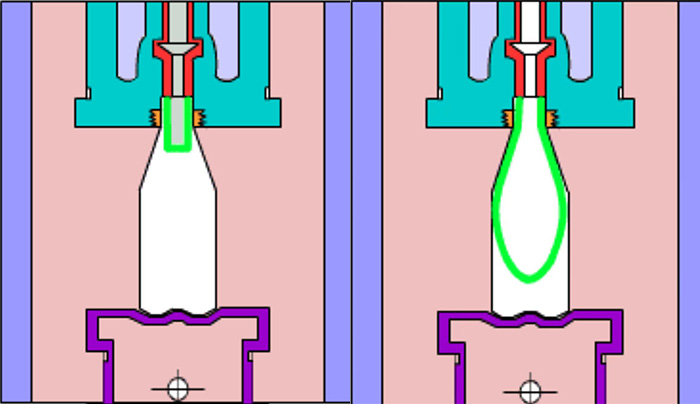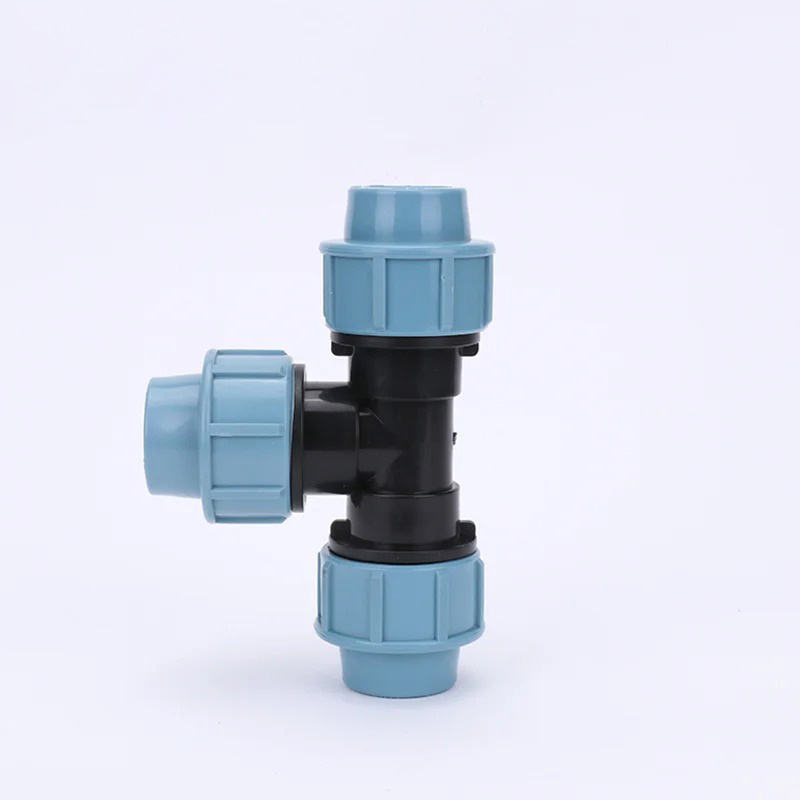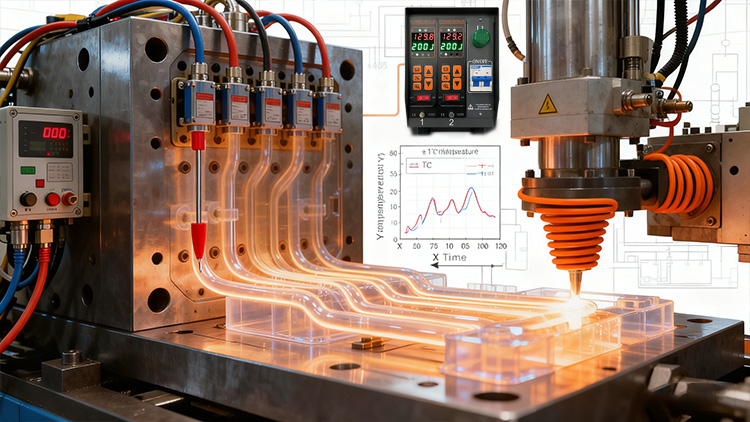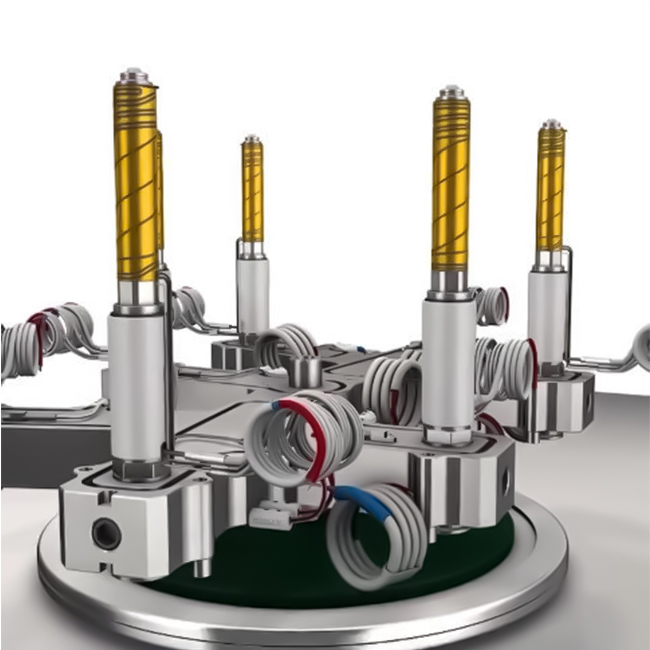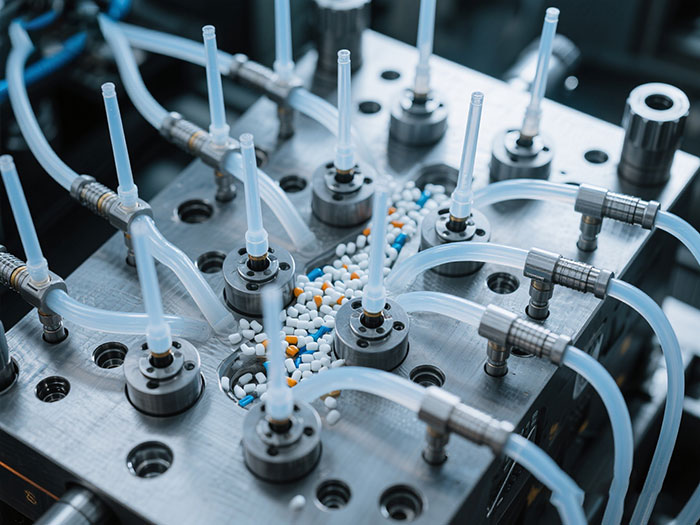Detailed Introduction and Working Principle of Hot Runner Temperature Control Box
2025-02-20
1. Hot Runner Temperature Control Box Overview
The hot runner temperature control box is an essential piece of equipment in injection molding, playing a crucial role in maintaining the temperature of the molten plastic within the hot runner system. By ensuring precise and consistent heat, it optimizes the molding process, improves product quality, enhances production efficiency, and reduces energy consumption. This device is indispensable for high-precision and complex injection molding applications, particularly in industries where consistent product quality and fast production cycles are required.
2. Introduction to Hot Runner Systems and Heaters
A hot runner system is a state-of-the-art technology used in injection molding, where heated runners are incorporated into the mold to keep plastic in a molten state as it flows through the mold cavities. The hot runner temperature control box acts as the "brain" of this system, regulating the temperature of key components such as the manifold and nozzles. The main function of the hot runner heaters, which are often integrated with this system, is to provide controlled, consistent heat to the manifold and nozzles. These heaters are typically made from high-quality materials that can endure high temperatures and transfer heat efficiently.
The use of electric heating elements ensures that the molten plastic remains at the desired temperature as it flows through the system. This allows for faster cycle times, reduced material waste, and improved overall product quality.
3. Main Functions of the Hot Runner Temperature Control Box
Temperature Control: Precisely adjusts the temperature in each heating zone of the hot runner system to ensure consistent flow of molten plastic, preventing issues like premature solidification, flow inconsistencies, or material degradation.
Temperature Monitoring: Continuously tracks the temperature within the hot runner system, preventing overheating or underheating that could lead to equipment damage or defects in the molded parts.
Independent Multi-zone Control: Allows for the independent control of multiple heating zones, accommodating complex molds and multi-cavity setups.
Alarms and Protection: Automatically triggers alarms and activates protection mechanisms in the event of temperature deviations, safeguarding both the equipment and the molded products.
Data Logging and Analysis: Some high-end models are equipped with data logging capabilities to store temperature data and production profiles, which can be analyzed to further optimize the injection molding process.
4. Working Principle
The hot runner temperature control box operates on a closed-loop control system that integrates with the hot runner heaters. The working process consists of the following key steps:
1. Temperature Detection: Temperature sensors (such as thermocouples or RTDs) are embedded in the hot runner system to continuously monitor the temperature of the manifold, nozzles, and other critical components.
2. Signal Feedback: The sensors send real-time temperature data to the control unit within the temperature control box.
3. Control Algorithm: The control unit compares the actual temperature with the preset target temperature. Using PID (Proportional-Integral-Derivative) algorithms, the system calculates the necessary adjustments and generates control signals.
4. Power Adjustment: These control signals regulate the power supplied to the heating elements, such as heating rods or rings, to maintain the required temperature within the hot runner system.
5. Feedback Loop: The system continuously monitors and adjusts the temperature, forming a feedback loop that ensures the temperature remains stable, promoting consistent melt flow and high-quality molded parts.
This closed-loop system optimizes the heat distribution and ensures uniform temperature control across the hot runner components, including the manifold and nozzles.
5. Main Components
Control Panel: The control panel allows for the input of temperature parameters, display of real-time temperatures, and notification of any alarm events. Advanced models feature touchscreens or digital displays for user-friendly operation.
Temperature Sensors: These sensors are embedded throughout the hot runner system, constantly providing temperature data to the control unit.
Heating Elements: Commonly made of high-quality materials, these heating elements, such as rods or tubes, provide heat to maintain the molten state of the plastic in the system.
Control Circuit: This includes the microprocessors, PID controllers, and power regulation modules that process sensor data and adjust heating element output.
Alarm System: The alarm system is activated when the temperature falls outside the acceptable range, preventing damage to the equipment or molded products.
Communication Interface: Some advanced control boxes come with remote monitoring capabilities, allowing integration with higher-level management systems for data collection and process optimization.
6. Applications
Hot runner temperature control boxes are used across industries that require high-precision injection molding, including:
Automotive Industry: Manufacturing automotive components, such as interior parts, precision exterior components, and functional plastic parts.
Electronics: Producing electronic housings, connectors, and other high-precision plastic components.
Medical Devices: Molding medical instruments and consumables that require high cleanliness and precision.
Packaging: Used to produce packaging components, such as bottle caps and containers, with high surface quality.
Consumer Goods: Manufacturing household items requiring superior aesthetics and functionality.
7. Advantages
Improved Product Quality: By maintaining precise temperature control, hot runner systems reduce defects like shrinkage, warping, or flow marks, ensuring consistently high-quality products.
Enhanced Production Efficiency: Faster cycle times, reduced cooling time, and less material waste contribute to a more efficient production process.
Energy and Cost Savings: Efficient temperature control reduces energy consumption and material waste, lowering operational costs.
Ease of Operation: Highly automated systems with intuitive user interfaces minimize the need for skilled labor, making the equipment easier to operate.
Versatility: Independent zone control makes it ideal for complex molds and multi-cavity mold setups, offering greater flexibility in the production process.
8. Maintenance and Care
Regular maintenance is essential to ensure the reliable performance of the hot runner temperature control box:
Regular Sensor Inspections: Verify that temperature sensors are securely installed and functioning correctly.
Cleaning the Control Box: Prevent dust and debris buildup inside the control box to ensure efficient operation and cooling.
Inspection of Heating Elements: Check heating elements periodically for wear and ensure their resistance values are within acceptable limits.
Sensor Calibration: Ensure temperature sensors are calibrated regularly to maintain measurement accuracy.
Wiring and Connector Checks: Ensure all wiring and connections are secure to prevent electrical faults.
Software Updates: For systems with upgradeable software, regular updates help improve control algorithms and enhance functionality.
9. Future Trends
With the advent of Industry 4.0 and smart manufacturing, hot runner temperature control systems are evolving rapidly. Future trends include:
Smart Controls: More intelligent algorithms for self-adjusting temperature control, predictive fault detection, and real-time optimization.
Networking Capabilities: Remote monitoring and integration with higher-level systems via industrial communication protocols (such as CAN, Modbus) or wireless networks.
Higher Precision: Ongoing improvements to temperature control precision to meet the increasingly stringent demands of high-precision molding.
Energy Efficiency: Further optimization of heating elements and control algorithms to reduce energy consumption and enhance overall system performance.
Conclusion
Hot runner temperature control boxes play an integral role in injection molding by maintaining optimal temperature conditions within the hot runner system. These systems, along with their heating elements, ensure the molten plastic maintains the desired temperature for smooth flow, improving product quality, cycle times, and overall production efficiency. By understanding the working principles and optimizing their operation, manufacturers can significantly enhance productivity, quality, and cost-effectiveness in their injection molding processes. The future of hot runner systems lies in their continued integration with smart, networked technologies, enabling manufacturers to achieve even greater efficiency and precision.
